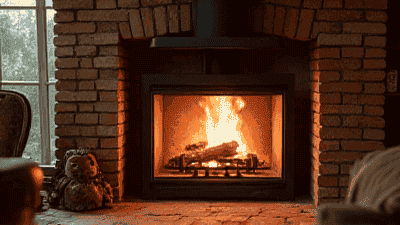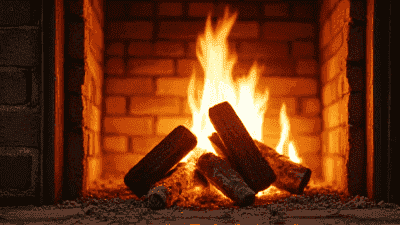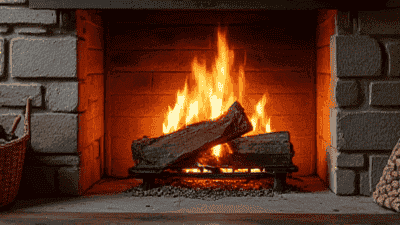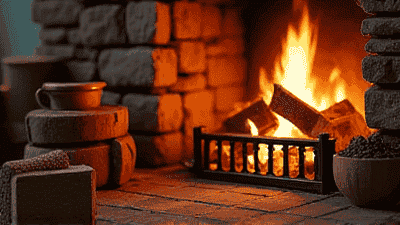Fireplace and Chimney Maintenance: Seasonal Preparation for Cozy Nights



As fall approaches and winter draws near, the allure of a warm, crackling fire becomes one of the season's greatest joys. Whether you enjoy curling up with a book by the fireplace or hosting family gatherings around it, proper maintenance of your fireplace and chimney is essential for safety, efficiency, and enjoyment. Regular inspections and maintenance not only prevent hazards but also extend the lifespan of your fireplace system. This comprehensive guide will cover everything you need to know about fireplace and chimney maintenance, with a focus on seasonal preparation and best practices to ensure cozy nights without worry.
Fireplaces are beautiful features that can enhance the ambiance of your home, but they also require careful upkeep. Neglecting your fireplace and chimney can lead to serious risks, including:
Creosote buildup in chimneys is a major cause of chimney fires. Regular maintenance reduces this buildup, minimizing risk and keeping your home safe.
Blocked or damaged chimneys can lead to dangerous gases, such as carbon monoxide, seeping into your home. A well-maintained chimney ensures that these gases are vented safely outside.
A poorly maintained fireplace may not burn efficiently, leading to increased energy bills and reduced comfort in your home. Regular upkeep maximizes heating efficiency, ensuring you get the most out of your fireplace.
Water can cause significant damage to your chimney structure, leading to costly repairs. Regular inspections help identify leaks and other issues before they escalate.
A well-maintained fireplace and chimney not only serve your family’s functionality but also enhance your home’s aesthetic appeal and overall market value.

As winter comes to an end, it’s crucial to inspect your fireplace and chimney as part of your spring cleaning routine.
Examine both the exterior and the interior of your chimney.
After a season of use, it’s time to clean out the residues from burning wood.
Summer is the off-peak season for fireplace use, making it an excellent time to focus on preventive maintenance.
During warmer months, pests may seek shelter in your chimney.
Summer rain can seep into your chimney and cause deterioration.
As the weather starts to cool, it’s time to prepare your fireplace for its busiest season.
Before the first fire of the season, have a professional perform a thorough inspection.
Prepare the fireplace for use by cleaning out any debris.
Ensure you have a supply of seasoned firewood ready for use.
With your fireplace ready for use, it's important to perform ongoing maintenance during the winter months.
Keep an eye on creosote levels throughout the winter.
Take care of your firebox for safe and efficient burning.
On snowy days, ensure that your chimney remains unobstructed.
Your fireplace can be a source of warmth and comfort when used safely. Here are some essential safety tips:
Installing a screen or glass doors helps contain sparks and embers that can escape the fireplace, reducing the risk of fire hazards.
Always supervise burning fires, especially when children and pets are present. Allow fires to burn down to ash before leaving the room.
Maintain a clearance of at least three feet around the fireplace from furniture, decorations, and any flammable materials.
When disposing of ashes, use a metal container and make sure they are completely cool before removal. Store the container away from the house.
Keep a fire extinguisher within easy reach of the fireplace and ensure that it is charged and functional.

Paying attention to subtle signs can help prevent bigger problems down the line. Here are some indications that it may be time to call in a professional:
A strong, unpleasant smell from the fireplace even when not in use could indicate creosote building up or other issues in the flue.
If you notice smoke or soot escaping into your living area, it’s a sure sign that there’s a blockage in the chimney that needs to be cleared.
Visible cracks in the masonry or mortar of the chimney can lead to serious structural problems and need immediate attention.
If you notice water leaks around the firebox or chimney during or after heavy rain, it may signal improper sealing or cap issues.
While regular maintenance can often be handled by homeowners, certain situations necessitate professional assistance:
If you identify significant structural damage or require extensive repairs, hiring a qualified chimney specialist is crucial.
If you suspect a blockage in your chimney flue and cannot resolve it, request the assistance of a professional chimney sweep.
If your fireplace is equipped with gas lines or advanced features, consult a professional for any technical issues.
Ensure that your fireplace and chimney comply with local building codes. If you have questions about safety standards or installations, seek out a professional.

Preparing your fireplace and chimney for seasonal changes is crucial for ensuring cozy, enjoyable experiences during colder months. Regular inspection, cleaning, and maintenance will enhance the safety and performance of your fireplace while extending its lifespan.
Each season brings specific tasks that, when fulfilled, offer peace of mind and promote a safe environment for you and your family. By prioritizing regular maintenance and addressing any issues promptly, you can confidently enjoy warm, crackling fires and create lasting memories during chilly evenings.
As the seasons change, make it a habit to include fireplace and chimney maintenance in your home care routine. Take pride in your fireplace as an inviting centerpiece that enhances your living space and offers warmth and comfort during the colder months.